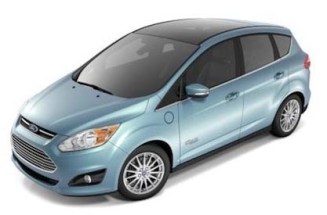Our goal is to power our house and at least one car with inexpensive, renewable solar. State and Federal tax credits, combined with record low photovoltaic solar panel prices, make now an ideal time to go solar.
The auto industry sees the writing on the wall. Demand for alternatives to the ICE (internal combustion engine) is increasing. The cost of gas may fluctuate from season to season, but there is no denying the inevitable direction prices go. Up with inflation. Up now that the world is at or near peak oil.
The big automakers and revolutionaries like Tesla are all rolling out a diversity of new cars, some of which run on electricity only (plug-ins) and others are electric-gas hybrids (plug-in hybrids). From my own musings, it is clear that plug-in hybrids make more sense economically and from a practical perspective, at least at the present time. You get all the benefits of driving purely electric for short commutes, like to/from work, while having gas as backup for longer drives.
Sales of existing plug-in hybrids, like the Volt and Prius plug-in, suggest I’m not alone in my thinking. Sales of mass market plug-in hybrids are soaring while all-electric car sales are stagnating (for recent report, see: http://www.latimes.com/business/money/la-fi-mo-cmax-plugin-hybird-20120719,0,6576690.story). Sorry Leaf. Drop your prices substantially and do it soon or you are compost.
To achieve our goals, we’ve been keeping our eyes out for the ideal plug-in hybrid car. I test drove a Volt. While the technology is impressive and the car looks great, I was struck by how poor the visibility was while driving. The bulky A-pillar blocks side-to-side visibility. The small window in the back, plus the protruding rear headrests, makes rear visibility poor. It also felt cramped (and I’m not a big guy; 5′ 9″). So, the Volt is off my list.
Prius plug-in is off the list too. All electric range is too low (11-13 mi) and it looks like….well…. a Prius. No offense to those who have one. It’s a great car. I just don’t like the way it looks.
However, I can’t help but be drawn to the new Ford Focus every time I see one. It’s almost as sexy and aggressive as a BMW, but not priced like a BMW. Ford makes a Focus (all) Electric, but its too damn expensive (~$40,000). Way too much given it’s limited (~100 mi) range.
If Ford can find a way to make a Focus “Energi” (gas/plug-in hybrid) and hit the ~$20k price point, they will sell briskly. Yes, this will stunt sales of the gas-only Focus. But that’s the point. Ford (and all automakers for that matter) could then make more money by selling accessories for such cars (like chargers, solar panel packages, etc). They can’t sell big-ticket items like that to people who buy their gas-only version.
In the meantime, I really like what I’ve read so far on the upcoming Ford C-MAX Energi (shown above).
It looks like a Focus, but it is somewhat larger (perfect for our family w/ soon to be 2 kids). It outcompetes the Prius V on virtually ever spec and, just announced today, the Energi will get 95 MPGe and an all electric range of 20 miles. This is more than enough for my 13 mi round-trip commute to and from work+daycare and should allow me to avoid using gas for most of my driving.
I’m looking forward to finding out how much it will cost, what it looks like in person and if it is fun to drive.
Perhaps most importantly, going electric with the car and solar with the house will save significant money in the long run. Solar electricity is free once the system is paid off.
My daily round-trip commute is 13 mi, my current 1988 vintage car gets 25 mpg and gas is currently $3.50 / gallon. Thus, I would save $436 per year in gas alone (3120 miles / year / 25 mpg x $3.50 / gal).
Not to mention, we will save about $660 / year on our electric bill when our 4.3 kW photovoltaic system is operational.
Bottom line, we could save $1100 / year by switching to solar and by using a plug-in car. That’s real money for something else. A college fund, 10 romantic dinners for two at a fancy restaurant, etc. And, that money will no longer be going to the Middle East and to King Coal.
Now, imagine how much you could save if you did the same. And if 10% of all Americans did the same (that’s 31 million people), we would collectively save $34 billion.


Price was just announced for C-Max Energi plug-in: $33,745 (includes destination charge). Car qualifies for $3,750 federal tax credit, bringing the final price to $29,995.
For comparison, C-Max hybrid is $25,995 (i.e. the version that is not plug-in).
Your website is very good. Folks can easily use your words to compute their own cost savings, as the technology improves. Your considerations are very thorough. The photos are also very clear and sharp on the website. This is an ideal method for communicating to many people at one time. I can see that you have spent a bit of time in your descriptions. They are like bread crumbs leaving a trail for anyone who wants to dig deeper into cost savings. I applaud you for trying to save costs. In this day and age, you will need every penny to make ends meet. I still dispute the fact that we are now at or near “peak oil”. I agree that peak oil is naturally inevitable. However, there is nothing natural about government regulation. Government regulations has a far greater impact on fuel cost then whether we are now at peak oil. When oil supplies are near exhaustion, oil companies will have no source for profit and low and behold cheap alternative energy will appear like magic. Don’t be surprised to see fuel prices go down, if regulations are removed.